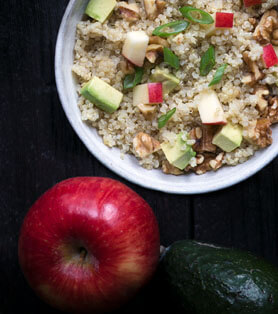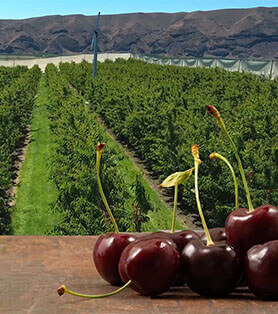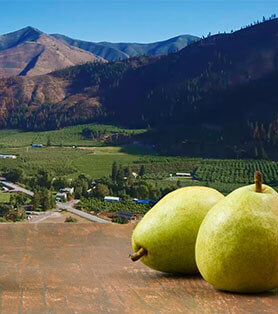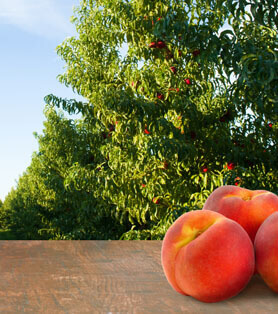Apples
Farm To Fork
Follow the journey that every Stemilt apple takes to get from our orchards to your table.
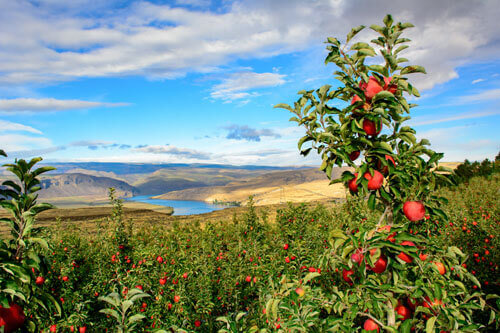
Where We Grow
Where We Farm our World Famous Apples
We’re pretty lucky at Stemilt; we get to grow apples in one of the best locales in the world: Washington State! Apples are grown throughout the central region of the state, starting down in the Tri Cities area and up through Wenatchee, Lake Chelan and the Okanogan region near the U.S.-Canada border. The Columbia Basin is in the middle of the state and one of the main places we grow apples.
Many people know Washington as a rainy state, but that’s on the western side. Our eastern side has a dry, arid climate with very low humidity that makes for the best growing place for apples. We have four true seasons and warm days followed by cool nights that work with volcanic, nutrient rich soil and an abundant water supply to help us produce your favorite World Famous apples each fall.
You can learn more about how we plant new apple orchards from our farming expert, Tate Mathison, on The Stem blog.
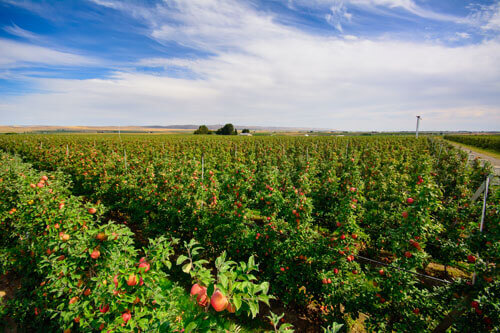
How We Grow
Apples need four true seasons to grow. In the winter, they want cold temperatures and a layer of snow to insulate the trees from the cold. This is the dormant, or resting state, and allows trees to store energy for the seasons to follow. We also prune during this season to balance next year’s crop load and maintain the tree shape.
Springtime is bloom time! Flowers appear on trees and bees begin working to pollinate each one. We see the crop ‘set’ and begin to realize the sizes and quantity of fruit we will have come fall.
In the summer growing season, we work to make sure apples are happy and healthy. We thin the tree if too many apples are growing on it. We cater to their needs for water and food, or nutrients. We also keep pests at bay through as many natural processes as we can. You’ll often see ladybugs in the orchard because they are a beneficial insect that help us with certain pests.
Come fall, it’s time to harvest apples! Every apple is hand-picked from the tree at the right time based on its color and qualities. We sample many apples before choosing the time to pick. Harvest begins in late July with Rave® and wraps up in late October with Pink Lady®. Every variety is on a different time schedule (based on when it blooms) and that keeps us busy harvesting in the late summer and throughout fall. Once picking is done, the trees shed their leaves and reenter the dormant stage to start the cycle all over again.
A fan favorite (and maybe yours too) is the Honeycrisp apple, which goes through some extra measures during harvest.
Storage & Packing
Storing Apples
After apples are picked, they go one of two places – to the packing line and off to your stores, or to one of our Controlled Atmosphere (CA) storage rooms. The apples that head to CA storage have shown us they have the color, qualities, and most importantly, the starch reserves, to help extend the apple season.
So, how does CA Storage work? Apples convert starches to sugars by taking in oxygen and giving off carbon dioxide. In these CA rooms, the oxygen levels become so low that the fruit essentially falls asleep preventing the fruit from converting those starches to sugars. The rooms are sealed and closely monitored until we need to pack and ship them. The length of storage depends on the starch levels; the higher the starch, the longer the fruit can be stored. Once the fruit is ready to be shipped, the room is opened which wakes the fruit and the conversion of starch to sugar begins again. The technology of storing apples has been with us a long time and allows us to give you a crisp, flavorful apple no matter what time of year it is!
Packing Apples
Packing is the final step before we ship apples to your stores. Apples enter the packing line from the bin they were harvested into. They are carried through the first stages of packing via a water channel. We do an initial quality sort of the apples to remove obvious flawed ones. Then, the apple is washed, dried, and waxed (not waxed if organic) and sorted through by hand again.
We have amazing technology, called an electronic optic sorter, that uses high-speed cameras to help us accurately size apples and sort them by their color and internal and external qualities (which we call grade). Once in their proper place, apples are packed (by hand or automation) into bags or bulk trays, placed into a Stemilt carton, and off to await the truck that takes them to your stores.

